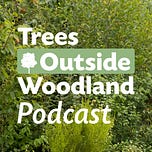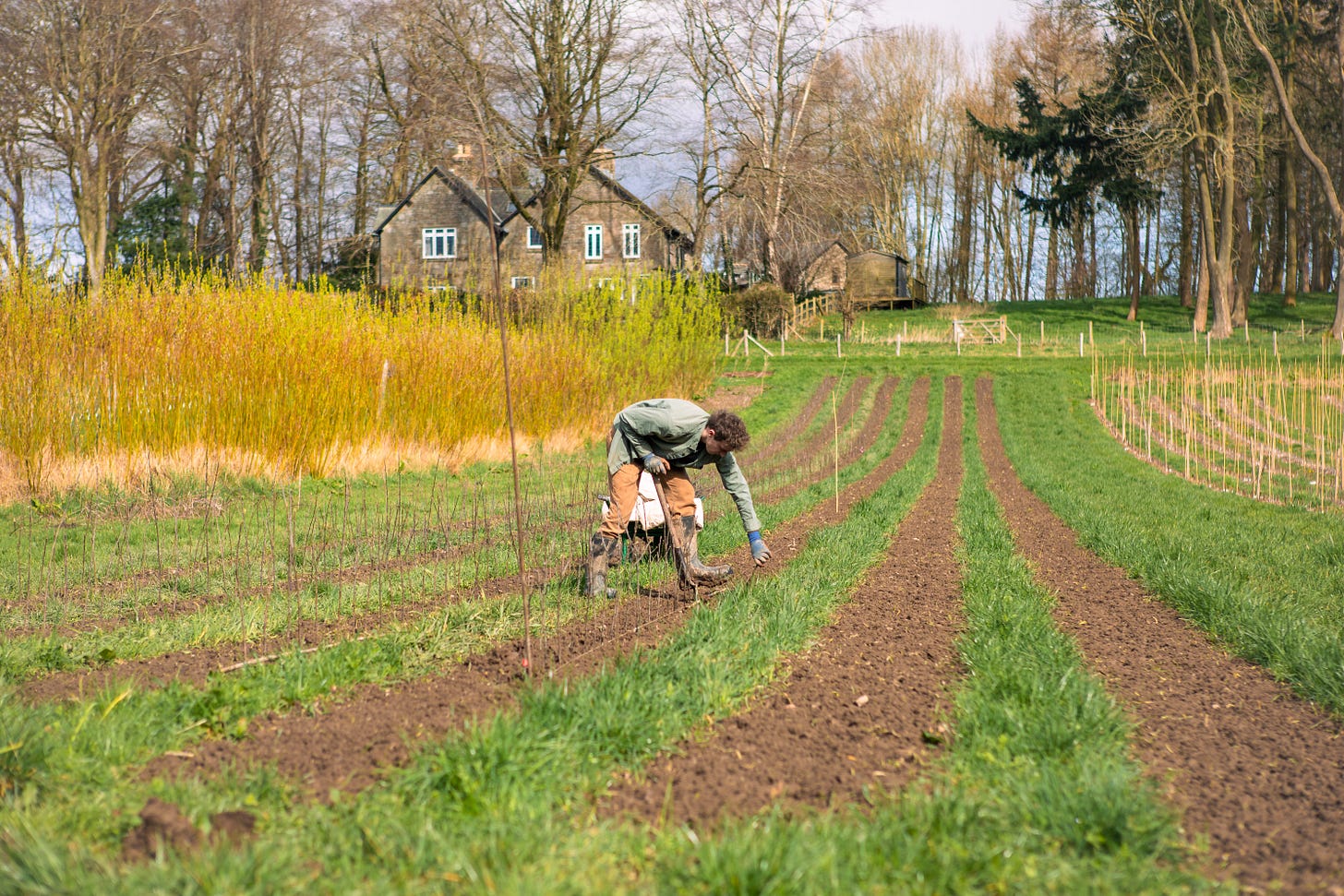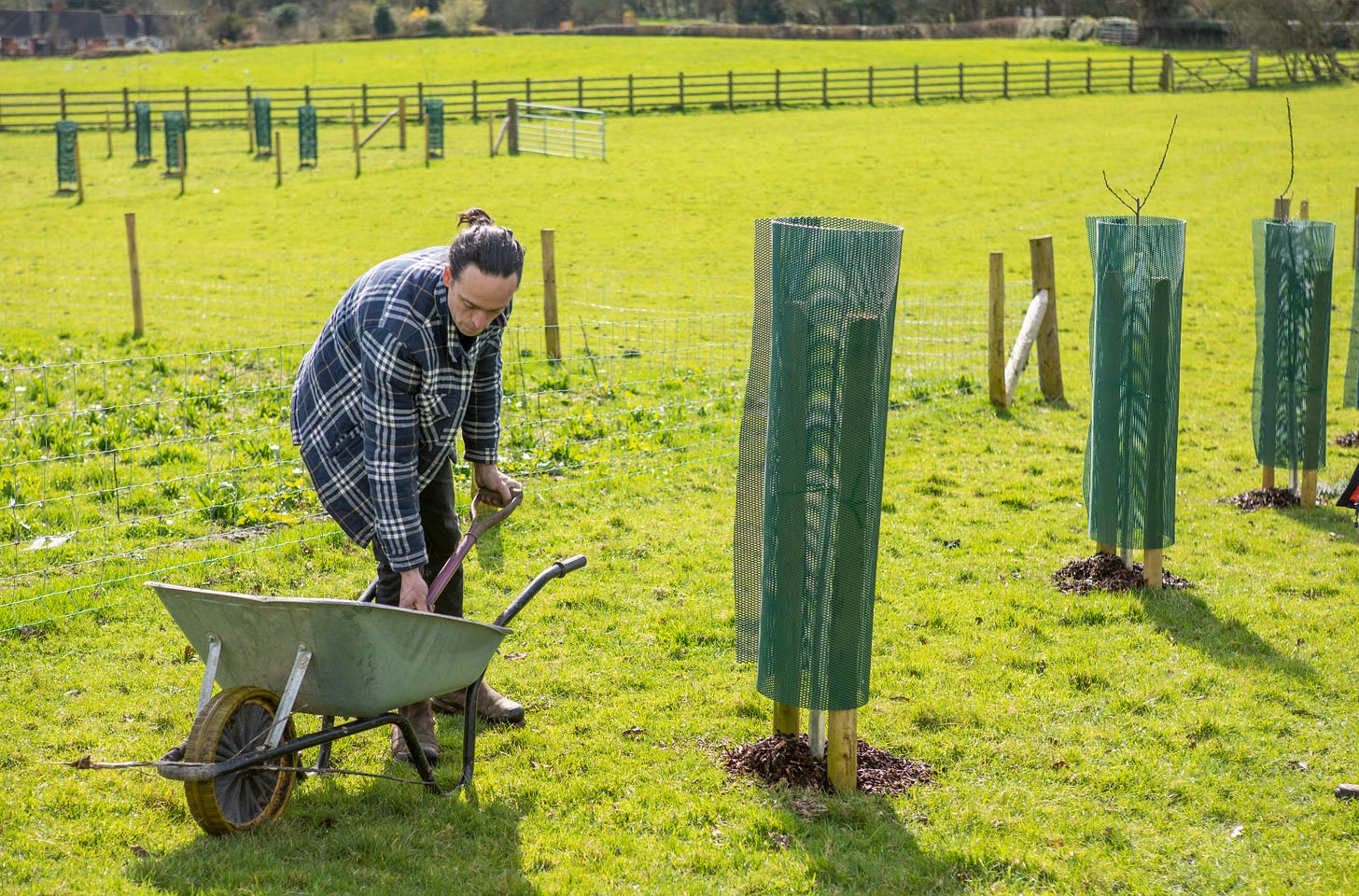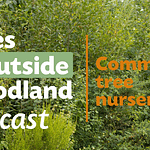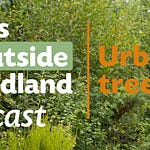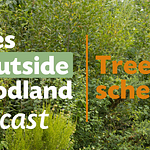In episode three of the Trees Outside Woodland Podcast, we explore the project’s work establishing more trees on farms.
Last week it was reported that around four per cent of England's farming land will need to incorporate more trees alongside food production by 2050 to meet the government's net zero and nature targets.
“Farmland accounts for 67% of land in England so if we want more trees we need farmers on board,” says Trees Outside Woodland project officer at Shropshire Council, Nick Rowles.
Over the past five years, the project has been testing different ways of establishing trees on farms, looking at agroforestry systems – alley cropping, wood pasture and orchards – and other methods such as hedge expansion, in-field trees, and field corners.
“Having the freedom to break the mould and design planting projects that benefit each individual site using local knowledge without a heavy emphasis on paperwork is the way forward.”
Nicky Rowles, project officer, Shropshire Council
Trees bring a variety of benefits to farms: they enrich soil quality, provide habitat for wildlife, shade for livestock, and mitigate effects of climate change, and the Trees on Farms pilot has been exploring how to best support farmers and landowners to establish trees on their land.
“These schemes have been brilliant. Unlike many other grants, they allow you to do what works best for the land – that flexibility gets more trees in the ground, and most importantly, the right trees,” says Colin Corkhill, regenerative forestry consultant.
Stood on one of the sites he manages just south of Chichester, Colin is obviously proud of the planting he has facilitated using Trees Outside Woodland’s Trees on Farms pilot scheme.
The harbour-side has been planted with a line of trees to help shore up against erosion from the ever-encroaching sea, replacing the turkey oaks that will soon be lost to the tide, and small patches of woodland have been connected through the restoration of historic hedgerows, creating new wildlife corridors.
“The uptake in our schemes has been fantastic,” added Rowles. “In the four local authority areas we’ve been experimenting in, we’ve had more than 130 applicants and have planted more than 78,000 trees.”
Those that have utilised the funding have been satisfied. 82% of farmers and landowners who applied would recommend the scheme to others, and 85% said the schemes allowed them to plant the systems they wanted.
And it’s this flexibility – allowing farmers to work with tree officers to create systems that work for all – that is the key to the success of the pilot.
Unlike typical funding, says Corkhill, this scheme enables those with local knowledge to have a say in the process, which creates results that are more beneficial for the environment and for the people involved.
“Being able to talk to the project officer at Chichester District Council was invaluable. We were able to walk around the site and discuss what will and won’t work, then came up with a collaborative, bespoke plan suitable to the site-specific conditions. We also knew whether we were going to get the funding almost straight away.” says Colin.
And crucially, the Trees on Farms pilot has found that when farmers and landowners are able to make decisions about how, where and why they plant on their land, they also seem to be happy to contribute towards costs, as shown by the continued uptake of the pilot grant scheme after recipients were required to contribute 50% of the costs of planting.
Rowles added: “The ease of application and flexibility present in the Trees on Farms scheme are vital if land managers are going to maximise the benefits of tree planting for their local wildlife. In a survey, the most popular reason why farmers chose this scheme over others was its flexibility, the second most popular was because it included advice from a project officer.
“Having the freedom to break the mould and design planting projects that benefit each individual site using local knowledge without a heavy emphasis on paperwork is the way forward.”
Listen here, and subscribe to catch each new episode as they land monthly through to September. You can also listen and subscribe on Spotify and YouTube.
The Trees Outside Woodland project is an HM Treasury-funded collaborative action research programme delivered in partnership by The Tree Council, Natural England, Defra and five local authorities, investigating new ways to increase tree cover outside of woodlands.
To find out more about the project, please visit www.treecouncil.org.uk/science-and-research/shared-outcomes-fund/
Find out more about The Tree Council at treecouncil.org.uk. Sign up to our monthly newsletter The Leaflet, and follow our social accounts: Instagram, TikTok, Facebook, LinkedIn, X/Twitter, YouTube.

